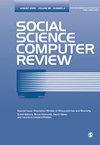Covering the Campaign: Computational Tools for Measuring Differences in Candidate and Party News Coverage With Application to an Emerging Democracy
IF 2.7
2区 社会学
Q2 COMPUTER SCIENCE, INTERDISCIPLINARY APPLICATIONS
引用次数: 0
Abstract
How does media coverage of electoral campaigns distinguish parties and candidates in emerging democracies? To answer, we present a multi-step procedure that we apply in South Africa. First, we develop a theoretically informed classification of election coverage as either “narrow” or “broad” from within the entire corpus of news coverage during an electoral campaign. Second, to deploy our classification scheme, we use a supervised machine learning approach to classify news as “broad,” “narrow,” or “not election-related.” Finally, we combine our supervised classification with a topic modeling algorithm (BERTTopic) that is based on Bidirectional Encoder Representations from Transformers (BERT), in addition to other statistical and machine learning methods. The combination of our classification scheme, BERTTopic, and associated methods allows us to identify the main election-related themes among broad and narrow election-related coverage, and how different candidates and parties are associated with these themes. We provide an in-depth discussion of our method for interested users in the social sciences. We then apply our proposed techniques on text from nearly 100,000 news articles during South Africa’s 2014 campaign and test our empirical predictions about candidate and party coverage of corruption, the economy, health, public infrastructure, and security. The application of our method highlights a nuanced campaign environment in South Africa; candidates and parties frequently receive distinct and substantive coverage on key campaign themes.报道竞选:衡量候选人和政党新闻报道差异的计算工具,在新兴民主国家中的应用
媒体对竞选活动的报道如何区分新兴民主国家的政党和候选人?为了回答这个问题,我们提出了一个在南非应用的多步骤程序。首先,我们从竞选活动期间新闻报道的整个语料库中,将选举报道分为 "狭义 "和 "广义 "两种,并根据理论对其进行分类。其次,为了部署我们的分类方案,我们使用监督机器学习方法将新闻分为 "广义"、"狭义 "或 "与选举无关"。最后,我们将监督分类与主题建模算法(BERTTopic)相结合,该算法基于变压器双向编码器表示法(BERT),以及其他统计和机器学习方法。结合我们的分类方案、BERTTopic 和相关方法,我们可以在广义和狭义的选举相关报道中找出主要的选举相关主题,以及不同的候选人和政党是如何与这些主题相关联的。我们将为社会科学领域感兴趣的用户深入讨论我们的方法。然后,我们在南非 2014 年竞选期间近 10 万篇新闻文章的文本中应用了我们提出的技术,并检验了我们对候选人和政党在腐败、经济、卫生、公共基础设施和安全方面的报道的经验预测。我们的方法的应用凸显了南非细致入微的竞选环境;候选人和政党经常在关键竞选主题上获得不同的实质性报道。
本文章由计算机程序翻译,如有差异,请以英文原文为准。
求助全文
约1分钟内获得全文
求助全文
来源期刊

Social Science Computer Review
社会科学-计算机:跨学科应用
CiteScore
9.00
自引率
4.90%
发文量
95
审稿时长
>12 weeks
期刊介绍:
Unique Scope Social Science Computer Review is an interdisciplinary journal covering social science instructional and research applications of computing, as well as societal impacts of informational technology. Topics included: artificial intelligence, business, computational social science theory, computer-assisted survey research, computer-based qualitative analysis, computer simulation, economic modeling, electronic modeling, electronic publishing, geographic information systems, instrumentation and research tools, public administration, social impacts of computing and telecommunications, software evaluation, world-wide web resources for social scientists. Interdisciplinary Nature Because the Uses and impacts of computing are interdisciplinary, so is Social Science Computer Review. The journal is of direct relevance to scholars and scientists in a wide variety of disciplines. In its pages you''ll find work in the following areas: sociology, anthropology, political science, economics, psychology, computer literacy, computer applications, and methodology.
 求助内容:
求助内容: 应助结果提醒方式:
应助结果提醒方式:


